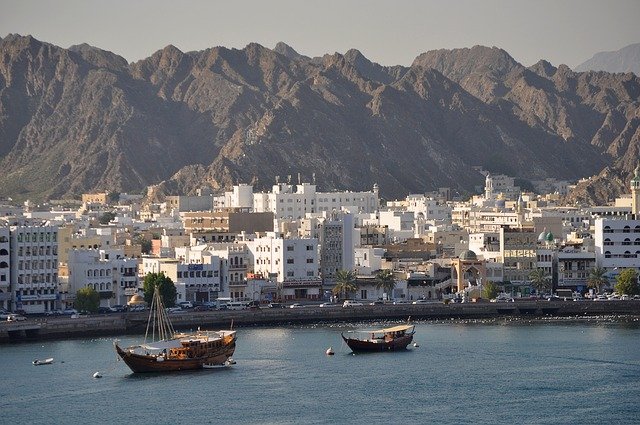
Statement of IMF Staff Visit to Oman
An International Monetary Fund (IMF) mission, led by Mr. Daniel Kanda, conducted a virtual mission to Oman from January 17 to 31 to review economic developments, the outlook, and policies. Discussions focused on the impact of COVID-19 and related oil price shock, and policy priorities during the recovery phase and beyond. The Omani authorities indicated that they will be favorable to the publication of future IMF reports. The IMF staff team would like to thank the Omani authorities and other counterparts for the open and candid discussions.
Economic Developments and Outlook
- The authorities of Oman responded rapidly in 2020 to contain the spread of COVID-19 infections. Measures included closure of non-essential businesses, social distancing requirements, and border restrictions, while increasing health and medical support and social assistance to the population. The swift and well-coordinated response effectively limited the spread of the coronavirus in the latter part of 2020, but the social distancing and other restrictions weighed heavily on economic activity, particularly those requiring close human contact.
- Substantial measures were also implemented to mitigate the impact of the COVID-19 and oil sector shocks on households, firms, and banks. In addition to the direct impact of COVID-19 on economic activity, sharp declines in oil prices triggered by the global spread of the pandemic, and cuts to oil production under the OPEC+ agreement, weighed on the oil sector. Fiscal measures to support the economy included interest-free emergency loans, waiving or reducing selected taxes and fees, flexibility to pay taxes in installments, and establishing the Job Security Fund to support citizens who lost their jobs. In addition, the Central Bank of Oman (CBO) eased financial conditions through lower interest rates and liquidity injections, deferred loan installment payments, and relaxed macro prudential requirements on capital buffers and liquidity ratios.
- Nevertheless, the shocks took a heavy toll on the economy in 2020. Overall GDP contracted by 6.4 percent (revised up from the previous IMF forecast of -10 percent), with non-hydrocarbon GDP estimated to have contracted by 10 percent and a shallower decline in hydrocarbon GDP—due to strong oil condensate production not covered by the OPEC+ agreement. Construction, hospitality, and wholesale and retail trade sectors were particularly hard-hit. Inflation turned slightly negative owing to subdued demand. Employment conditions due to the economic slowdown were mostly relieved by a 15.7 percent reduction in expatriates and the flexibility to negotiate temporary wage cuts. The external and fiscal positions also weakened substantially:
· The current account deficit is estimated to have widened from 5.4 percent of GDP in 2019 to 10 percent in 2020, mostly owing to lower hydrocarbon exports. International reserves declined slightly to around US$15 billion (6.5 months of imports), reflecting stable FDI inflows and a Eurobond issuance.
· Government hydrocarbon revenues fell by 3.4 percent of GDP, reflecting the oil sector shocks. Non-hydrocarbon revenues fell by 0.2 percent of GDP reflecting declining economic activity and measures such as suspension of penalties on late tax filings and some government fees. Despite significant attempts to constrain expenditure, the sharp decline in nominal GDP implied a rise in the expenditure-GDP ratio. Overall, the fiscal deficit rose by 10.6 percentage points to 17.3 percent of GDP and was financed by external bond issuance, drawdown of deposits and sovereign funds, and privatization proceeds. As a result, central government debt rose to 81 percent of GDP, from 60 percent in 2019.
- To address rising fiscal vulnerabilities, the authorities announced an ambitious medium-term fiscal adjustment plan and broad public-sector reforms . The fiscal adjustment plan (Tawazun) targets the elimination of the fiscal deficit over 2021-25 by boosting non-oil revenues while keeping nominal fiscal expenditures broadly constant. To improve public asset management, the government established the Oman Investment Authority (OIA) with a mandate to strengthen the governance and efficiency of public enterprises. Also, a new holding company—Energy Development of Oman (EDO)—was created to manage and finance government investments in oil, gas, and renewables.
- Financial soundness indicators appear healthy. As of December 2020, banks’ capital adequacy ratios averaged 19.1 percent and the Liquidity Coverage Ratio was around 200 percent, comfortably above regulatory minima. Nonperforming loan ratios increased slightly to 4.2 percent, with specific provisioning coverage of 63 percent and total coverage of 98 percent. Nonetheless, profitability indicators declined reflecting the impact of COVID-19 on economic activity, loan repayment deferment, and risk provision charges.
Information Source: Read More…..
Submitted by: Press release



